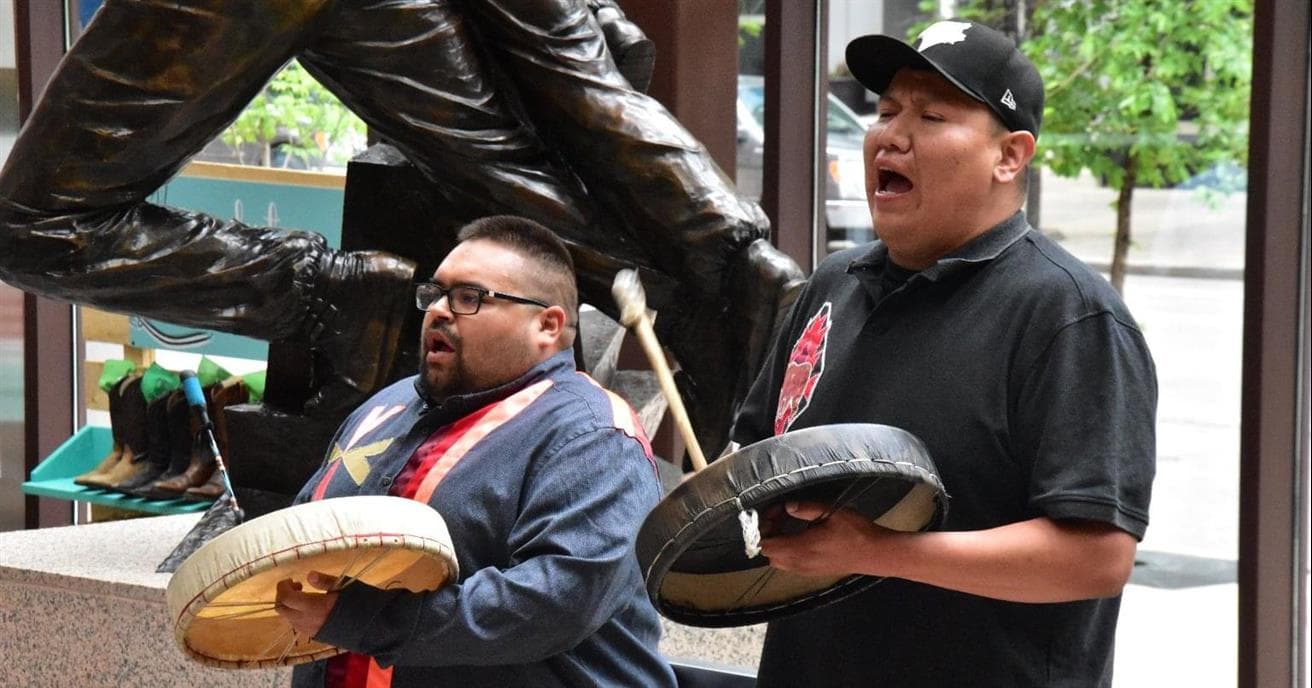When traveling, we make a point of learning common phrases and greetings so we can converse with the locals. But how many of us know a single word of one the of the 70 Indigenous languages in Canada? The answer is not many.
The aftereffects of colonialization have left many Indigenous languages in danger of being lost forever, taking with them history, stories, songs, knowledge and culture. There are now twice as many Indigenous children than there are Elders who can speak an Indigenous language.
However, there is a resurgence of Indigenous language speakers happening across the country. Over the last 10 years, the number of people who can speak an Indigenous language has grown by three per cent or about 260,500 people.
“Technology is making it easier to learn Indigenous languages,” explains Dr. Michael Lickers, a specialist with Indigenous and Community Relations (I&CR) at Suncor. “There are videos, audio files and smart phone apps that offer Indigenous language lessons. Universities are also offering entire degrees in Indigenous languages.”
Protecting and revitalizing Indigenous languages is an important part of reconciliation. So important that of the 94 Calls to Action from the Truth and Reconciliation Commission, six are focused on language and culture.
So, what can non-Indigenous People do to help protect these languages, some that are on the brink of extinction?
Michael suggests learning the language.
“If you’re traveling to Spain for a holiday, most people learn some common phrases, such as asking for water in Spanish, so they can exist in that country while there,” says Michael. “We live in Treaty 7, where there’s approximately five Indigenous languages unique to this area, and many of us cannot ask for a water or say hello in any of those languages. It would be to our advantage to learn the basics of these languages.”
While it’s challenging to find a fluent speaker of one of Canada’s Indigenous languages—in some cases there is only one person still living who can speak a language fluently—it’s easy to start learning them and help protect the languages.
Suncor’s I&CR team have produced a document that lists the territories and greetings in the communities it operates, which is available to its workforce. There are also Indigenous employees who speak and understand Indigenous languages so, you can ask someone how to say something in their language.
“It’s OK to make mistakes when you’re learning a language and practicing it,” says Michael. “It’s more important that you are taking the initiative and the first step to learn than it is to not take a step at all. This is an act of changing the way we think about our relationship with Indigenous Peoples in this country.”
There are many resources available for those wanting to learn more about the true history of where they live, who the traditional Indigenous Peoples of that area are and what languages they speak.
Oh, and for those wondering, to ask for water in Mohawk, one of the languages spoken in the Six Nations of the Grand River, where Michael is from, you would say: Enwá:ton ken ohné:kanos enkhnekí:ra (onh-wa-da-donh guhn oh-neh-ga-nos ong-neh-ki-rah)? And in the Stoney-Nakoda language, one of the of Treaty 7 languages, it’s mini ma koo (mee-nee-muh-koo)?
To learn more about the territories and languages spoken where you live, visit:
Calgary Public Library’s Indigenous Languages Resource Centre (supported by the Suncor Energy Foundation)
Native Land Digital
Guide to Indigneous languages in Canada




